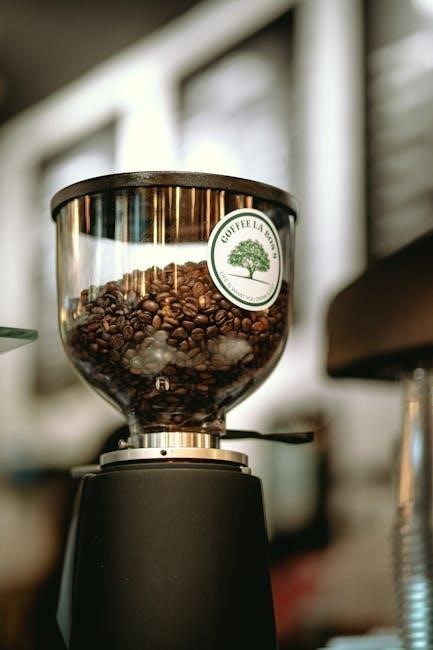
coffee grinding guide
Coffee grinding is the first step in brewing, significantly impacting flavor and aroma. Freshly ground beans ensure optimal extraction, while the right tools and techniques enhance coffee quality.
Why Grinding Your Coffee Matters

Grinding your coffee is essential for preserving flavor and aroma. Pre-ground coffee loses its freshness quickly, while freshly ground beans ensure optimal extraction. The grind size directly impacts brewing, with the right consistency enhancing flavor. A coarse grind suits French Press, while fine grinds are ideal for espresso. Customization allows you to tailor the grind to your brewing method, ensuring the best taste. Investing in a quality grinder and mastering grind sizes elevates your coffee experience, making every cup more enjoyable and flavorful.
The Basics of Coffee Grinding
Coffee grinding involves breaking down beans into particles to release flavors and aromas. The method and tool used significantly impact the outcome. Burr grinders are preferred over blade grinders for consistency and flavor preservation. Grind size varies by brewing method, with fine grinds for espresso and coarse for French Press. Freshly grinding beans just before brewing ensures optimal flavor. Understanding grind size and distribution is key to balanced extraction. Proper technique, including measuring and storing beans, enhances the grinding process. Mastering these fundamentals elevates your coffee game, ensuring every cup is flavorful and aromatic.
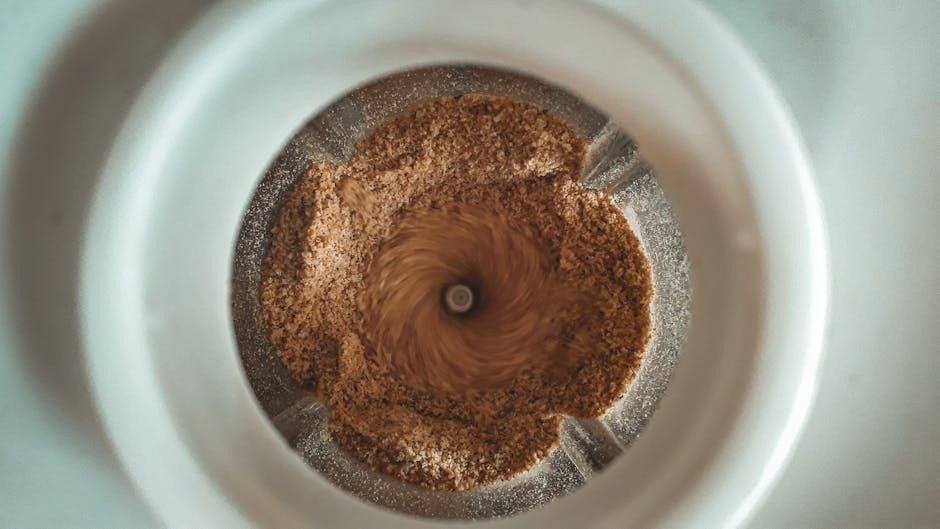
Choosing the Right Coffee Grinder
Selecting the right grinder ensures consistent results and enhances flavor. Consider brewing methods, bean quantity, and personal preferences. Burr grinders offer better precision, while blade grinders are more affordable. Electric grinders provide convenience, whereas manual ones offer control and portability. Key features like grind size adjustment and durability are essential. The right grinder is a worthwhile investment for coffee enthusiasts, directly impacting the quality and taste of every cup; Choose wisely to elevate your coffee experience and ensure optimal extraction for your preferred brewing techniques.
Types of Coffee Grinders: Blade vs. Burr
Coffee grinders come in two primary types: blade and burr. Blade grinders use spinning blades to chop beans, offering affordability and ease of use. However, they generate heat, which can degrade flavor and lead to inconsistent grinds. Burr grinders, on the other hand, crush beans between two abrasive surfaces, ensuring uniform particle size and precise control. They are more expensive but are preferred by coffee enthusiasts for their consistency and ability to preserve flavor. Blade grinders are suitable for casual use, while burr grinders are ideal for those seeking high-quality, customizable grinding. Choosing the right type depends on your brewing method, budget, and desired flavor profile.
Manual vs. Electric Grinders: Pros and Cons
Manual grinders are cost-effective, portable, and produce less heat, preserving coffee’s natural flavors. They require manual effort but offer precise control over grind size. Electric grinders are faster, ideal for daily use, and handle large quantities effortlessly. However, they can generate heat, potentially affecting flavor, and are generally noisier. Manual grinders are perfect for enthusiasts who value precision and enjoy the brewing process, while electric grinders suit those prioritizing convenience and speed. Both options cater to different needs, with manual grinders emphasizing quality and electric grinders focusing on efficiency. Choosing between them depends on your lifestyle, budget, and how much time you’re willing to invest in grinding.
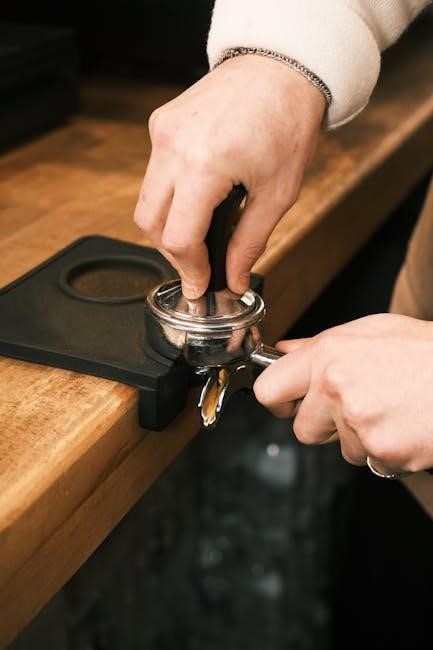
Key Features to Consider When Buying a Grinder
When selecting a grinder, prioritize grind size adjustability, consistency, and the type of grinding mechanism. Burr grinders are preferred over blade grinders for heat control and uniformity. Consider the grinder’s capacity, motor type, and durability. Consider your daily coffee consumption and the number of people you’re serving. Manual grinders are quieter and more portable, while electric grinders offer speed and convenience. Look for features like built-in scales, timers, and easy cleaning designs. The material and build quality also impact longevity. Ensure the grinder suits your preferred brewing methods, as some are optimized for specific grind sizes. Balancing these factors ensures you find a grinder that meets your needs and enhances your coffee experience.
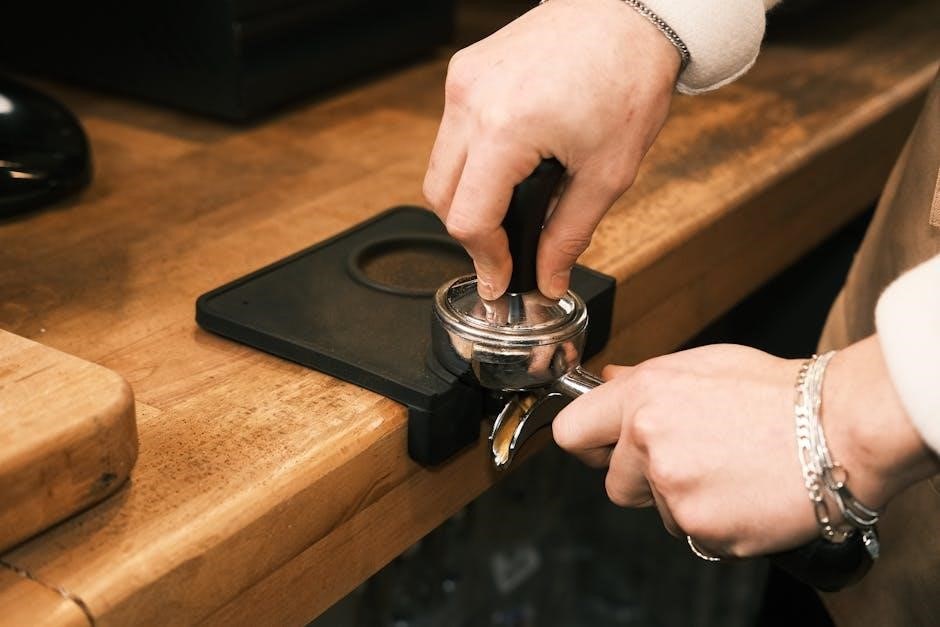
Coffee Grind Size Guide
Coffee grind size significantly impacts extraction and flavor. Different brewing methods require specific consistencies, from fine espresso grinds to coarse French Press textures, ensuring optimal results.
Understanding Grind Sizes for Different Brewing Methods
Grind size plays a crucial role in achieving the perfect brew, as it directly impacts extraction and flavor. Each brewing method requires a specific consistency: fine for espresso, medium for drip or pour-over, and coarse for French Press. A burr grinder is ideal for precise control, ensuring consistent particles. Blade grinders can work but may produce uneven results. Adjusting the grind size based on the brewing method ensures optimal extraction, preventing under- or over-extracted coffee. For example, espresso demands a fine grind to force pressurized water through the grounds, while cold brew benefits from a coarse grind to steep properly. Matching the grind to the method is key to unlocking the full flavor potential of your coffee beans.
Grind Size Chart: From Espresso to French Press
Here’s a detailed grind size chart for popular brewing methods:
– Espresso: Extra-fine, almost powdery grind.
– Turkish Coffee: Very fine, similar to sand.
– Aeropress: Fine to medium-fine grind.
– Pour-over: Medium grind, slightly coarser than sand.
– Chemex: Medium-coarse grind, similar to kosher salt.
– Drip Coffee: Medium grind, like fine sand.
– French Press: Coarse grind, resembling coarse salt.
– Cold Brew: Extra-coarse grind, almost chunky.
Consistency is key to proper extraction, so use a burr grinder for precise control. Adjust based on your equipment and personal taste for the best results.
How to Adjust Grind Size for Optimal Flavor
Adjusting grind size is crucial for achieving the perfect cup. Start by tasting your coffee—if it’s weak, try a finer grind; if bitter, go coarser.
Use a burr grinder for precise control, as blade grinders can create uneven particles. For espresso, aim for a fine grind, while French press requires a coarse texture.
Small adjustments can make a big difference, so tweak gradually. Clean your grinder regularly to ensure consistent results and avoid old coffee oils affecting the flavor;
Experiment with your equipment’s specific needs, as some brewers perform best with slightly different grind sizes. Proper calibration ensures balanced extraction and a flavorful cup every time.
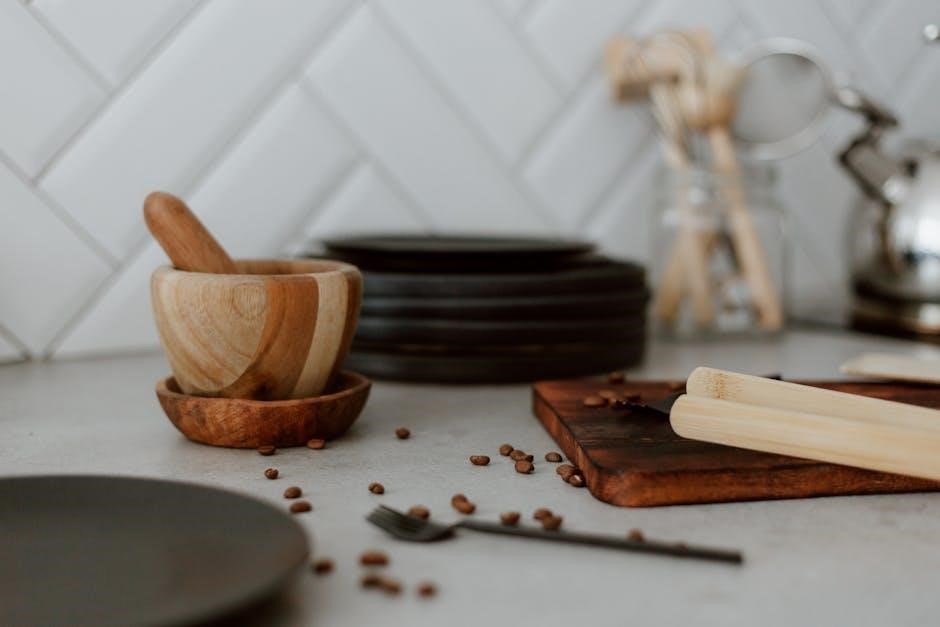
Best Practices for Grinding Coffee
Grind coffee just before brewing for peak freshness. Use a burr grinder for consistent results and adjust grind size based on brewing method for optimal flavor.
Measuring the Right Amount of Coffee
Measuring the right amount of coffee is crucial for achieving balanced flavor. Start with 1 tablespoon of coffee for every 6 ounces of water, adjusting to suit your taste preferences. For precise control, use a digital scale to measure beans before grinding. Experiment with ratios to find your ideal balance—some prefer stronger brews, while others like it milder. Consistency is key, so stick to your measured amounts once you’ve dialed in your preference. Freshly grinding the exact quantity ensures optimal extraction and prevents waste. Proper measurement sets the foundation for a perfect cup, allowing you to enjoy your coffee exactly how you like it.
The Importance of Freshness in Coffee Grinding
Freshness is key to achieving the best flavor in coffee. Coffee beans lose their aroma and flavor within minutes of grinding due to exposure to air, moisture, and light. Grinding beans immediately before brewing ensures optimal extraction and preserves the coffee’s natural oils and nuances. Pre-ground coffee often sits on shelves for weeks, losing its vibrancy. For the freshest taste, grind whole beans just before brewing. Store beans in an airtight container in a cool, dark place to maintain their quality. Freshly ground coffee makes a noticeable difference in aroma and taste, offering a more vibrant and satisfying cup every time.
Storing Coffee Beans for Maximum Flavor
To preserve the flavor and aroma of coffee beans, proper storage is essential. Use an airtight container to protect beans from air, moisture, and light, which can cause staleness. Store them in a cool, dark place, such as a pantry, away from direct sunlight and heat sources. Avoid storing beans in the freezer or refrigerator, as this can introduce moisture and odors. For optimal freshness, store beans for up to two weeks. If you won’t use them within this time, consider freezing them in an airtight container, but only thaw what you need. Proper storage ensures beans remain vibrant and flavorful, ready for grinding when you need them.
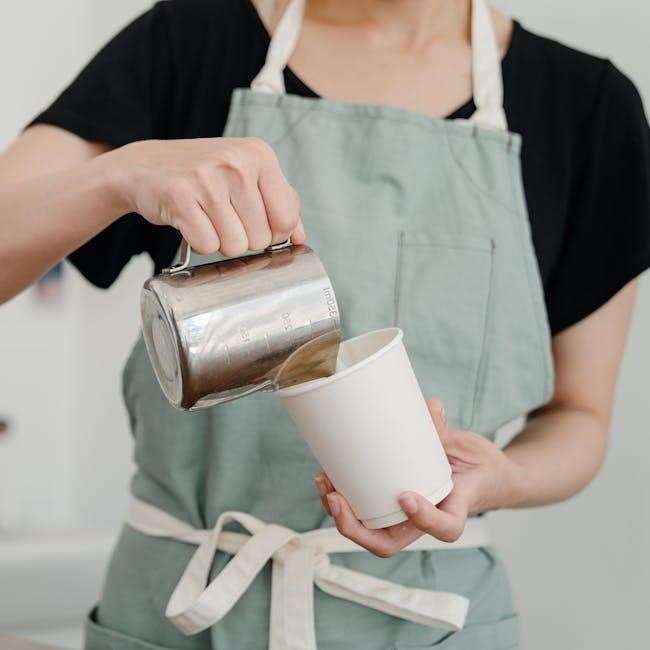
Recommended Coffee Grinding Tools and Equipment
Invest in a quality coffee grinder, such as the Timemore Chestnut C3 or Comandante C40, for consistent results. Essential accessories include a coffee scale, tamper, and airtight storage containers.
Top-Rated Coffee Grinders for Home Use
For home use, top-rated coffee grinders like the Timemore Chestnut C3, Comandante C40 Nitro Blade, and Goudveer F1 are highly recommended for their consistency and durability. These grinders offer precise control over grind size, ensuring optimal flavor extraction. The Timemore Chestnut C3 is praised for its excellent price-to-quality ratio, while the Comandante C40 is known for its sleek design and precision grinding. Manual and electric options are available, catering to different preferences and brewing methods. When choosing, consider factors like grind consistency, ease of use, and build quality to find the best fit for your coffee routine. These grinders are essential for coffee enthusiasts seeking to elevate their home brewing experience.
Essential Accessories for Coffee Grinding
Essential accessories for coffee grinding include a coffee scale, distribution tool, and storage containers. A coffee scale ensures precise measurements, crucial for consistent brewing. A distribution tool helps even out the grounds in your portafilter or brewing device, promoting uniform extraction. Storage containers, like opaque airtight jars, preserve coffee freshness by blocking light and moisture. Additionally, a cleaning brush for your grinder is vital for maintaining hygiene and preventing old coffee oils from affecting new grounds. These accessories enhance the grinding process, ensuring flavor preservation and convenience. They are must-haves for any coffee enthusiast aiming to optimize their coffee grinding routine and overall brewing experience.

Maintenance and Care of Your Grinder
Regular cleaning and descaling are vital for grinder longevity. Use a soft brush to remove residue and ensure dry storage to prevent rust and maintain performance.
How to Clean Your Coffee Grinder
Cleaning your coffee grinder is essential for maintaining flavor and preventing old coffee oils from affecting your brew. Start by unplugging the grinder for safety. Use a soft brush to remove loose grounds from the burrs and chambers. For deeper cleaning, grind a small amount of rice or uncooked pasta to absorb oils and residue. Discard the rice and wipe down all parts with a dry cloth. Avoid using water, as it can damage electrical components or encourage mold growth. Regular cleaning ensures optimal performance and keeps your grinder in excellent condition for consistent grinding results.
Sharpening and Maintaining Burr Grinders
Maintaining burr grinders is crucial for consistent grinding performance. Over time, burrs naturally dull, affecting grind quality. Sharpening can be done using specialized tools or by replacing burrs when necessary. Regular cleaning is also key; use a soft brush or grind rice to remove residue. Steel burrs require more maintenance than ceramic ones, which stay sharper longer. For optimal results, test your grinder periodically to ensure even grinds. High-quality grinders, like the Timemore Chestnut C3 or Goudveer F1, are designed for durability and ease of maintenance. Proper care extends the life of your grinder and ensures precise control over grind size for superior coffee flavor.

Troubleshooting Common Grinding Issues
Address uneven grinds by adjusting settings or cleaning burrs. Clogged grinders can be fixed by dislodging old coffee residue. Static cling can be reduced with a damp brush.
Fixing Uneven Grinds and Clogged Grinders
Uneven grinds can result from incorrect settings or worn-out burrs. To fix this, clean the grinder and adjust the grind size. Clogged grinders often occur due to old coffee oils or residue buildup.
- For clogs, turn the grinder upside down and gently tap it to dislodge particles.
- Use a small brush or soft cloth to remove stubborn residue from the burrs and chambers.
- Grind uncooked rice or breadcrumbs to absorb oils and clear blockages.
- Regularly cleaning and maintaining your grinder prevents future issues.
Preventative care ensures smooth operation and consistent grind quality for better-tasting coffee.
Addressing Static Cling in Ground Coffee
Static cling in ground coffee, caused by friction during grinding, can lead to uneven distribution and affect brewing. To mitigate this, consider the following strategies:
- Grinder Type: Opt for burr grinders, which generate less static than blade grinders due to their crushing mechanism.
- Humidity Control: Use a humidifier to maintain a balanced environment, reducing static buildup.
- Bean Storage: Keep beans in airtight containers to preserve moisture and minimize static-prone conditions.
- Grinder Maintenance: Regularly clean the grinder to remove old residues that contribute to static.
- Anti-Static Measures: Gently tap the grinder or use a metal container to discharge static electricity.
- Grind Size Adjustment: Ensure the grind size suits your brewing method, avoiding overly fine grinds that cling more.
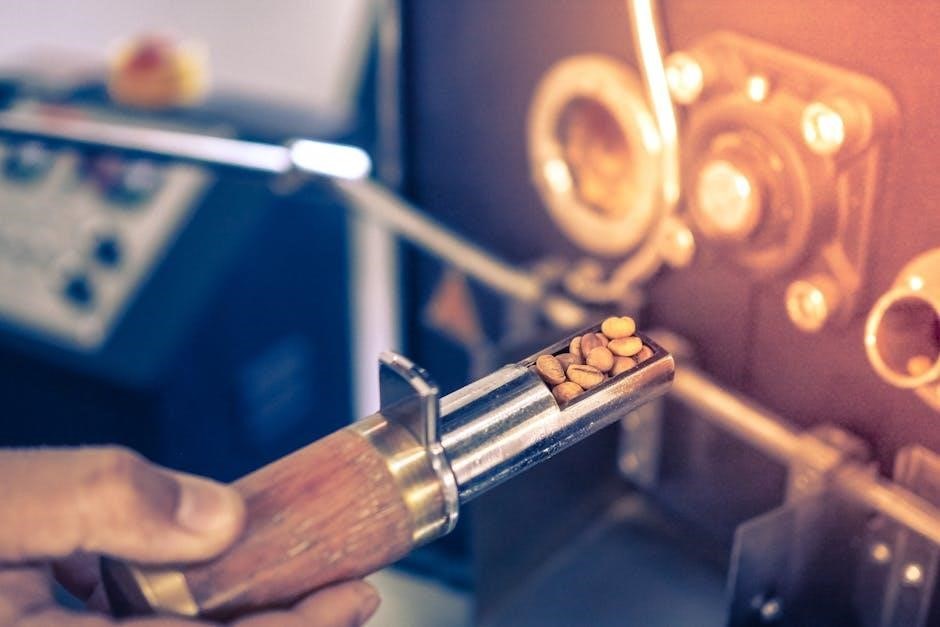
By implementing these tips, you can reduce static cling and enjoy a more even coffee distribution for optimal flavor.
Mastering coffee grinding elevates your coffee experience. Choose the right grinder, adjust grind sizes, and maintain freshness for consistent, flavorful brews. Experiment and refine your technique for perfection.
Mastering the Art of Coffee Grinding for Better Flavor
Perfecting coffee grinding ensures a richer, more balanced flavor. The right grind size for your brewing method is crucial, as it affects extraction and aroma. Invest in a quality grinder, whether blade or burr, to achieve consistent results. Freshly grinding your beans just before brewing preserves their flavor and aroma. Experiment with grind sizes to find the ideal match for your favorite brewing technique. Proper grinding balances acidity and body, enhancing the overall coffee experience. By refining your grinding skills and understanding the nuances of different methods, you can unlock the full potential of your coffee beans and enjoy a truly exceptional cup every time.

